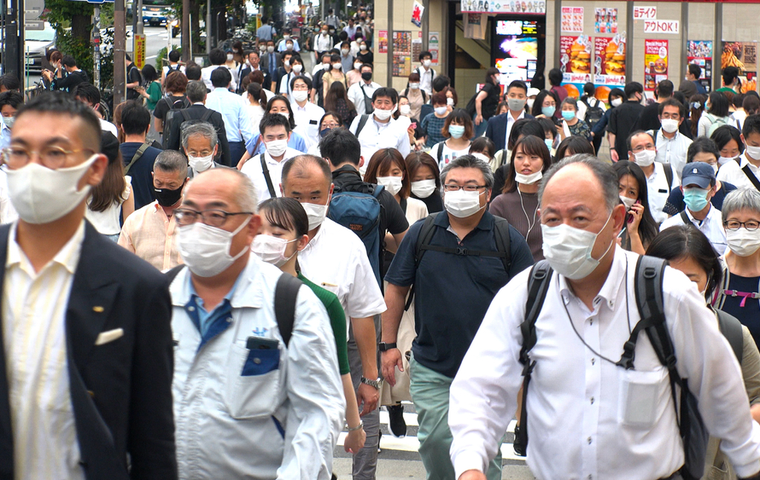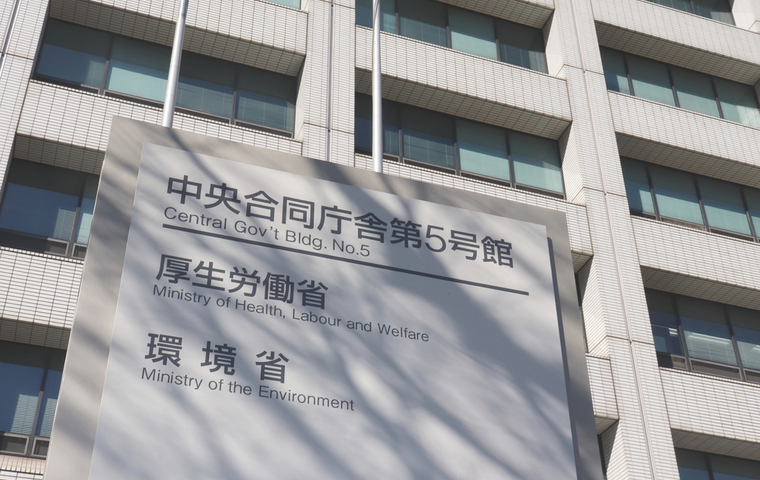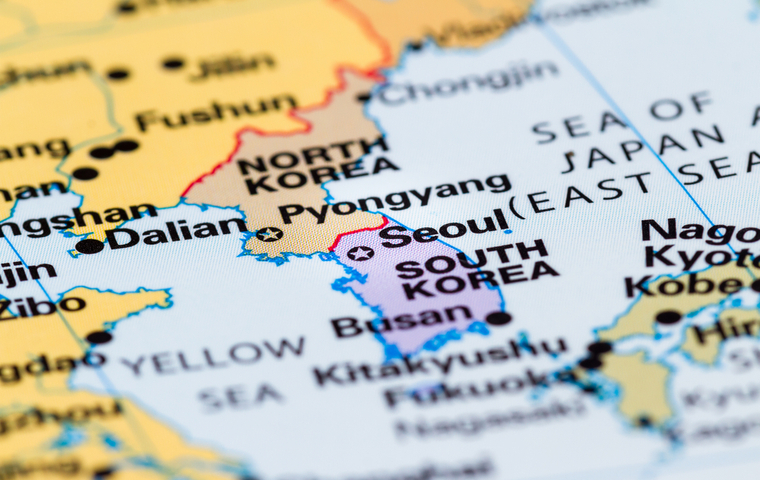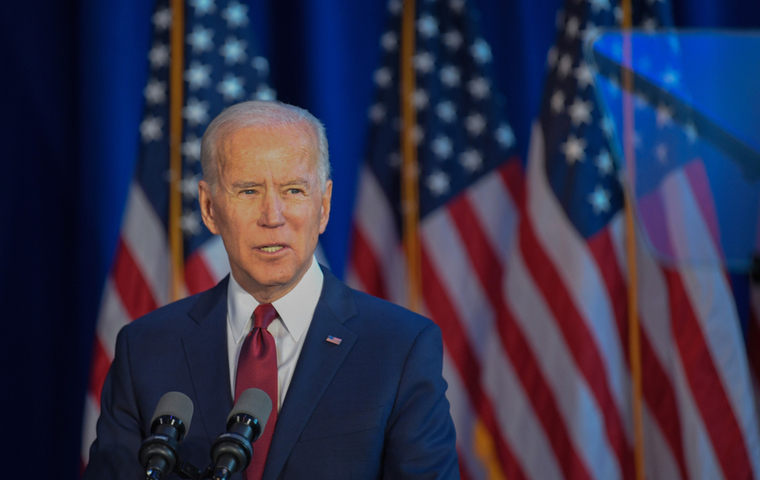Japan’s COVID-19 Response as Crisis Management (#1)
Related Articles

The COVID-19 pandemic turned out to be a protracted crisis for Japan.
In July 2020, Asia Pacific Initiative, a Tokyo-based think tank, established “The Independent Investigation Commission on the Japanese Government’s Response to COVID-19” (API/ICJC) to review Japan’s response to the COVID-19 crisis in the first half of 2020. I served on the secretariat for API/ICJC and co-authored its report. The Commission conducted 102 interviews with 84 government officials, members of the expert panel, and others, including Prime Minister Shinzo Abe, Chief Cabinet Secretary Yoshihide Suga, Minister of Health, Labour and Welfare Katsunobu Kato, minister in charge of the COVID-19 response Yasutoshi Nishimura, and Minister of Education, Culture, Sports, Science and Technology Koichi Hagiuda (titles as of January-July 2020), and Tokyo Governor Yuriko Koike. Interviews with government officials and members of the expert panel were conducted as anonymous background briefings. We asked both best practices and lessons learned from those involved in the crisis. Our motto was: “no review without truth, no recommendations without review.”
We listened thoroughly to the voices of those directly involved, based entirely on evidence, and committed to positivism. Instead of picturing a good vs. bad image, we worked to conduct a critical review.
On October 8, 2020, we handed the review report to Prime Minister Suga and held a press conference at the Japan National Press Club. In addition, Diet questionings were held based on the report, contributing to constructive political discussions. In January 2021, the English version of the complete report was released.
The period covered by the Commission, the first half of 2020, was the last phase of the seven years and eight months of the second Abe administration, the longest in Japan’s constitutional history. At his comeback inauguration press conference on December 26, 2012, Abe stated, “In keeping with my determination to defeat the impending crisis for the sake of our nation and people, today I formed a crisis breakthrough cabinet.” The Abe administration worked on the recovery from the Great East Japan Earthquake, as well as the crisis management of many serious disasters, including quakes, floods, and typhoons. It also experienced many security issues, such as North Korea’s nuclear tests and repeated launching of ballistic missiles, China’s intrusion into Japan’s territorial waters, and attacks on Japan-affiliated vessels in the Strait of Hormuz and the Gulf of Aden off the coast of Somalia. The COVID pandemic was the last crisis the Abe administration had to tackle. At the press conference declaring the state of emergency on April 7, 2020, PM Abe expressed COVID-19 as the “greatest postwar crisis.”
For this crisis management, the Japanese government “engaged in an all-out battle, with no other option” (Chief Cabinet Secretary Suga). In the central government, the Prime Minister’s Office and the Cabinet Secretariat fully mobilized related ministries, including the Ministry of Foreign Affairs (MOFA), Ministry of Economy, Trade and Industry (METI), Ministry of Education, Culture, Sports, Science and Technology (MEXT), and Ministry of Defense/Self-Defense Forces, with the Ministry of Health, Labour and Welfare (MHLW) playing the main role. As surge capacity (ability to respond) in an emergency, support staff was gathered in the COVID-related sections within each ministry. Since the MHLW was short of hands, alums and other ministry staff rushed to help. Although the response to natural disasters and pandemics differs in various ways, the government was lucky to have experienced staff in Prime Minister Abe’s Office who had accumulated abundant knowledge of crisis management during the long administration.
In September 2020, the Independent Investigation Commission asked Shigeru Omi, chair of the Novel Coronavirus Disease Control Subcommittee, how he regards Japan’s response to COVID-19 so far. Omi said that while the preparedness for COVID-19, an unknown infectious disease, was insufficient, the response by the government, medical institutions, health centers, nursing facilities, and other frontline workers was great.
Only Partial “Preparedness”
It had been foreseen that a pandemic could become a national crisis. In the National Security Strategy formulated in 2013, infectious diseases were regarded as one of the serious and urgent challenges that could affect “human security.” The preamble in the Infectious Diseases Control Law points out that pandemics such as the plague and cholera have “at times driven civilization to the brink of extinction.” Yet both the government and the Japanese public downplayed the risk, never dreaming an infectious disease could drive Japan to the brink of extinction.
East Asia has experienced a dreadful prevalence of infectious diseases, including the highly pathogenic avian influenza H5N1 found in Hong Kong in 1997 and the severe acute respiratory syndrome (SARS) in 2003. SARS spread from China’s Guangdong Province to Hong Kong, then in just a few days, propagated across the world. It was “an extraordinary situation, entirely new in the history of measures against infectious diseases” (Shigeru Omi), with healthcare workers struck, high fatality rate, and no effective treatments. In Taiwan, cases of SARS were confirmed at the Taipei Municipal Hoping Hospital, and the government forced a hospital lockdown for two weeks. Almost a thousand people, including patients, healthcare workers, and patients’ families, were confined within the hospital. SARS infected 57 staff and 97 patients, and 31 died inside the hospital. Middle East respiratory syndrome (MERS), first confirmed in 2012 in Saudi Arabia, suddenly caused an outbreak in South Korea in 2015. Besides killing 38, the outbreak was a huge blow to the tourism industry, said to have inflicted over two-billion-USD damage to the South Korean economy.
The Japanese government was not just sitting on its hands. The MHLW formulated the Implementation Manual for Infectious Diseases Health Crisis Management in 2007, revising it in 2011 and 2013. It stipulated the following Basic Guidelines:
– Keep in mind that once an outbreak occurs and spreads, infectious diseases can cause a serious impact on individual health as well as the entire society.
– Once an infectious disease occurs, a prompt initial response is the first requirement to prevent spreading. Therefore, response preparation needs to be made in advance by grasping the occurrence situation, information analysis, and so forth on a regular basis.
– In crisis management of infectious diseases, efforts should be made to assess the risk to the whole society (possibilities and scale of health damage), conduct risk communication (two-way exchanges on the risk and management measures), share risk awareness (risk perception), while conducting necessary and sufficient risk management (minimizing risk to an acceptable level).

Moreover, after experiencing the H1N1 influenza in 2009 and the Ebola outbreaks in 2014, Japan’s capacity for infectious disease crisis management improved to a certain extent.
While the H1N1 pandemic swept the world, Japan confined domestic outbreaks relatively well through measures such as tighter quarantine and prompt closing of schools. After H1N1 receded, the MHLW reviewed the measures against the pandemic, so as not to “be complacent with the low mortality rate alone” and to “apply them in counteracting resurgence of the H1N1 influenza and any other possible emerging or re-emerging infectious diseases in the future.” In June 2010, the MHLW released the Report of the Review Meeting on Measures against Pandemic Influenza (A/H1N1). The report proposed strengthening the institutional capacity and human resources of the National Institute of Infectious Diseases (NIID), quarantine stations, public health centers and public health institutes of local governments, and PCR and other testing capacities. The report ended by stating, “drastic improvement could not be expected without enhancing staff structures and improving the budget for infectious diseases,” and “as this issue has been previously pointed out repeatedly, on this occasion, we would like to conclude this report by strongly requesting realization of a strengthened pandemic preparedness system before the onset of next outbreak.”
This H1N1 pandemic review led to establishing the 2012 Act on Special Measures for Pandemic Influenza and New Infectious Diseases Preparedness and Response (Act on Special Measures), which became the “preparedness” for future infectious disease crises. The Infectious Diseases Control Law, under the MHLW’s supervision, stipulates the isolation, suspension, and hospitalization of those with both symptoms and detected pathogens, and mandatory medical examinations and reporting for those suspected of infection. Meanwhile, the Act on Special Measures targets the overall public, by social distancing, restrictions on events to reduce human contact, and stay-at-home requests by declaring a state of emergency. Since the implementation was considered to require comprehensive coordination beyond the MHLW and across multiple ministries, the Act on Special Measures was placed under the Cabinet Secretariat’s supervision.
Yet, even after the Review Meeting on Measures against H1N1, the central and local governments and the people never widely shared the sense of urgency over pandemics. Experts in public health have raised the alarm, but until the COVID crisis, the government had been preoccupied with natural disasters, North Korea, and China, and had underestimated the risk assessment of a pandemic. Many of the proposals from the H1N1 review remained in limbo without implementation. PCR and other testing capacities were still insufficient.
Instead of adding staff, the facilities and personnel of public health centers had been reduced each year, as if they were the MHLW’s “coffer for personnel reduction” (senior cabinet secretary). The public health center’s vital role is the epidemiologic investigation to prevent the spread of infectious diseases and food poisoning. If a patient is suspected to have infectious diseases or food poisoning, the standard procedure is for the medical institution that diagnosed the patient to report to the health center, which then conducts an examination. However, this was not enough to grasp the COVID-19 outbreak situation. Instead of waiting for the reports from the medical institutions, the public health centers conducted a proactive epidemiological survey to identify the close contacts. This “retrospective contact survey” led to cluster response and discovering the effective measure of avoiding the “Three Cs” (closed spaces, crowded places, close-contact settings). The health centers were also busy coordinating the PCR testing (administrative testing) at public health institutes, arranging hospitalization of those who tested positive and monitoring the health of those recuperating at home. The health centers were suddenly tasked with the responsibility of the first responder.
It was the same at the quarantine stations. One senior cabinet secretary said that, in border control, the quarantine enforcement power was the key; border control was “the function of testing capacity.” If numerous tests were conducted at the border, with the results instantly available, immigrant surveillance at the quarantine and issuing negative test proof to outgoing Japanese could be dealt with promptly. However, in the first half of 2020, the quarantine’s PCR testing capacity was strained by returning Japanese, leaving little room for foreign travelers.
One senior government official was aghast to find out that, despite their core role during an infectious disease crisis, health centers and their staff had been continuously reduced in the last ten years. The government had not prepared the surge capacity that could be mobilized efficiently and swiftly during an emergency. On the contrary, it had been slashing the core capacity, such as the NIID, public health institutes, and public health centers. The budget and personnel for health centers and NIID have declined annually, and the public health institutes’ budget had also been “the hunting ground for staff and budget reduction” (public health institute personnel).
Japan was not “prepared” to manage an infectious disease crisis. The MHLW faced the COVID crisis with a framework that “fared well in regional battles but was weak in an all-out war” (MHLW personnel).
In this situation, public health experts with experience in containing SARS had been working hard in response to the COVID-19 pandemic. It was March 2003 when the WHO named the fatal pneumonia SARS, which had spread from China to Southeast Asia, and issued a global alert as an infection requiring precaution on a global scale. China was unwilling to provide information on this unidentified pneumonia. Measures towards SARS began rolling when WHO staff Carlo Urbani, who examined a patient in Hanoi with an unexplained fever, reported the case to the WHO Western Pacific Regional Office (WPRO). But Urbani himself was also infected with SARS and died. On his deathbed, he asked to have his lungs used for research, and the Urbani strain, isolated from his lungs, became the standard strain of the SARS virus. For experts on public health measures, the SARS experience has great meaning. But unfortunately, for many politicians and crisis management practitioners, SARS did not become a major concern, because the war in Iraq broke out on March 20, 2003.
Japan was not “prepared” to face the infectious disease crisis with the whole of the government. But it fared relatively well in the response to COVID-19 in the first half of 2020.
The Initial Response to the “Unfamiliar Infection”
“We couldn’t figure out what was going on—we were responding in blindfolds.”
“At any rate, it’s an unknown pandemic; entirely different from an armed attack.”
This was how one senior government official reflected on the initial response to COVID-19, when both the infection’s characteristics and the accurate situation were beyond the grasp. It was an unexpected and extremely uncertain crisis.
In crisis management, the first move is critical. It is impossible to be thoroughly prepared for every one of them, including those with low occurrence risk. Therefore, for the expected crisis, we need to consider multiple scenarios, especially the “worst-case scenario,” and decide on the initial move in advance. Then, update the risk evaluation in line with the ever-changing situation, be prompt and decisive, and respond with agility. Koichi Isobe, who served as the Director of J-5, Joint Staff, Ministry of Defense during the Great East Japan Earthquake in 2011, points out that “plan pessimistically, act boldly” is the ironclad rule of crisis management.
Unlike ballistic missiles, there is no predicting the launching and landing areas of infectious diseases. Just like cyberattacks and biological or chemical weapons, when responding to an unknown crisis, the threat demands immediate detection.
In Japan’s initial response to COVID-19, the early warning was effective. Following the report on New Year’s Eve of an unidentified new pneumonia in China, Japan tightened security and monitoring, and succeeded in the early detection of incoming infection from Wuhan. It was originally a measure to prepare for the Tokyo Olympics and Paralympics scheduled for 2020. Since foreign visitors were expected to surge for the Tokyo 2020, any serious unidentified infections required immediate detection. In April 2019, the MHLW introduced “suspected case surveillance,” focusing on unexplained severe infections. So, there was a system in place for NIID testing for cases with similar symptoms to the new pneumonia confirmed in Wuhan. One MHLW personnel noted this arrangement “worked beautifully.” On January 15, 2020, the NIID found Japan’s first case of COVID-19. The patient, a Chinese man residing in Japan, had returned from Wuhan where he had stayed for a while and developed the disease. Since he was already in the recovery stage, there was little virus for PCR testing, and he first tested negative at the NIID. But because he had returned from Wuhan, and had a fever and pneumonia, the NIID conducted additional tests, and managed to identify positive COVID-19 results. It was the world’s second case outside China, following Thailand.
Japan had been ahead of Taiwan, which detected its first case on January 21. Given that it took until March for New York to detect its first case and allowed an outbreak, Japan’s surveillance system deserves high regard.
Public health experts had realized early on that this infection was spreading quietly and rapidly across the world. The experts found out that containing it like SARS or Ebola was extremely difficult. The Chinese government, the first to confirm COVID-19, had initially announced that there was no clear evidence of human-to-human transmission. Based on Beijing’s official statement, the WHO also presented similar views. The relationship between a state and an international organization is like that of the Diet and the bureaucrats in Japan. The WHO, an administrative organization, can only operate within the scope set by its master, the 194 member states. If China, a member state, claims there is no human-to-human transmission and is reluctant to provide data, it was difficult for the WHO to object to China head-on. Yet, later, the public health specialists working in the expert panel assumed that, with cases confirmed in Thailand and Japan, human-to-human transmission must have occurred, and the cases in Wuhan must be 10 or 100 times bigger than reported.
There are pre-symptomatic transmissions of COVID-19, and many of the patients are asymptomatic or mild cases. Containing COVID-19 is extremely difficult. One expert felt strongly that the situation was already quite dangerous.
On January 20, China admitted there was human-to-human transmission. Tokyo’s recognition for the threat soared.
Continues in #2




